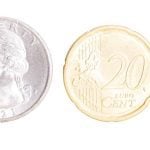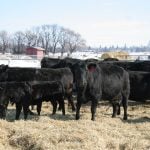Farmers are questioning the long-term compatibility of the electronic control equipment they buy.
There is not yet an abundance of information at the retail level in North America about compliance with
International Standards Organization, or ISO, guidelines.
The world of farm equipment is moving toward CANbus ISO 11783 compliance in the foreseeable future. The criteria is designed to give the farming community a common set of protocols, formats and computer language, so any piece of electronic equipment from one agricultural company can talk to electronic equipment from another.
Read Also

VIDEO: Ag in Motion documentary launches second season
The second season of the the Western Producer’s documentary series about Ag in Motion launched Oct. 8.
That does not happen today.
The industry goal is for the criteria to eventually be fully integrated worldwide in all original equipment and aftermarket components.
Theoretically, the move to free and open communication will eliminate proprietary systems that lock a farmer into one implement paint colour for the whole line of equipment.
The ISO criteria will allow a farmer to mix and match any mainline paint combination as well as any combination of aftermarket control systems.
For the near future, however, the prospect of free and open information systems puts potential buyers in a bind. Farmers are understandably leery about investing in a piece of equipment that may become obsolete in a year or two simply because it cannot talk to other equipment.
X20 fully compliant
Kee Technologies realized a few years ago that farmers would eventually have to put ISO compliance at the top of their list.
As a result, the Australian aftermarket company began designing a new agricultural controller that would be CANbus ISO 11783 compliant from the start.
“The Zynx X20 works very well with every CANbus compatible system it’s been tested with so far,” said Stephen Jones, Canadian manager for Kee, based in Red Deer.
In addition to CANbus, it handles one ethernet interface, four RS232 interfaces, four USB 2.0 interfaces and two PS2 interfaces.
“That’s one thing that makes the X20 unique. It supports all these interfaces simultaneously and it does it today. No need to wait for an upgrade or another version at some later date.”
Kee has tested its X20 with more than 30 companies worldwide to make sure it truly is CANbus compatible with the information systems of those other companies.
These tests also ensure that everyone else is using the CANbus specifications in the same manner. Jones said full implementation of the CANbus protocol might be difficult to achieve because each manufacturer is free to choose the bits of the protocol it wants or needs for specific purposes.
“For example, the older RS232 communications hardware was based on a 24 pin protocol. But almost all devices today use only nine pins, and most devices only use a few of those nine pins to get the signals they need to make it work. That same kind of interpretation might happen to CANbus.”
Jones said that while the internationally accepted protocol is in place and all major manufacturers support it, there is no way to enforce it. Continued testing is essential to make sure the intent of free and open electronic communication is met.
“Kee has interfaced repeatedly with different vendors and will keep doing that to ensure that new devices actually do support the CANbus protocol.”
The X20 guidance system handles Global Positioning System, Differential Global Positioning System, Wide Area Augmentation System, Real Time Kinematic and marine. The task controller manages variable rate on six bins or tanks, including seed, granular, liquid and ammonia.
It imports prescription maps, builds elevation maps as it crosses the field and logs product applications. Up to 13 maps can be active simultaneously, including six logging layers plus an elevation map. These six logging layers can contain the prescription maps for the task controller.
The X20 accepts numerous file formats and handles guidance and automatic section control.
Jones said the X20 can perform two distinct functions simultaneously. It can be a virtual terminal and a machine or task controller. He said the company’s first step was to design a more powerful virtual terminal that could handle the moving real time colour maps, graphics packages, guidance and control information demanded by the latest seeding and spraying equipment.
“According to CANbus protocol, a virtual terminal talks to a machine controller and tells it what needs to be done. The machine controller does the calculations etcetera needed to control the machine. It sends those messages to whatever is being controlled.”
The machine controller tells the machine what to do whether it’s in a seeding tractor, sprayer, fertilizer application tractor, combine or other implement.
“The X20 could act either as a virtual terminal talking to the machine controller, or as the virtual terminal and machine controller combined into one enclosure.”
Jones said the new X20 platform uses the industry standard Windows XP Professional operating system, which is more stable than the home version.
It supports the Zynx Precision Agricultural application software. It has a 1GHz processor with 512 MB RAM and 2 GB solid state drive.
Farmers get another major benefit from a system that packs the virtual terminal, task controller, software, hardware and all related accessories into one package, according to Jones.
Until now, a farmer might simultaneously run electronic devices from two or even three competing companies. Whenever a problem occurs, the first response from each supplier is that the fault must be with one of the other units.
Jones said when all the components and functions are under one roof, finger pointing is eliminated. The opportunities for interface problems are almost eliminated because everything is kept in the family. If a problem should pop up, the farmer only needs one phone number.
Another feature of the X20 is that it has no moving parts. Jones said farm implements of all types create vibration frequencies that have a devastating impact on disk drive systems. Kee engineers decided the best way to solve that problem was to simply remove all moving parts.
“There is no spinning hard drive. The X20 employs a solid state C drive memory. It’s a unique system in the fact that there are no moving parts in the X20 at all. There isn’t even a fan to suck dust into the console. It keeps working in all types of high vibration situations.”
The Kee Zynx X20 sells for $5,665 US. Full auto section control is a $2,800 option.
Effect on aftermarket
While CANbus standardization may create many long-term benefits for farmers, some people have speculated that once all the major manufacturers are speaking the same electronic language, there will be no further need for the aftermarket suppliers, which will be a giant loss to farmers.
The argument is that all the majors see a big CANbus benefit because of lower production costs. With the increased use of electronics throughout all ag implements, the R&D factor along with manufacturing costs make this a significant part of the overall price of a machine.
elop a ground speed sensing system, the cost of each sensor is spread over a smaller number of implements and is thus passed on to the farmer in the form of a higher priced implement.
However, if CNH, John Deere and Agco can all buy the same electronic components for ground speed sensing, there is a significant drop in the cost of producing those standardized parts and putting them on their implements.
If that same standardized ground speed controller is used by MacDon, AgShield, Morris, Bourgault, Harmon and everyone else in the worldwide ag industry, the production cost keeps dropping as does the cost of keeping a current parts inventory at the dealership level.
But for GPS and controllers, what does CANbus standardization do for the many aftermarket companies created in the last 15 years?
For the most part, these independent companies started small. Those that grew did so to fill the technology void left by the majors. The smaller companies were able to move faster to deal with changing needs.
Further support for the aftermarket industry comes from the fact that major manufacturers buy most of their electronics from those aftermarket companies.
Trimble has a long history of supplying hardware to CaseIH, and Ag Leader supplies software to CaseIH. Dickey John provides a lot of the electronic components for John Deere. The autosteer on the Agco MT tractors comes from Beeline in Australia.
But once all the majors are electronically compatible, farmers should then have full access to all the latest and best devices. Will they or the major companies still have need for the independents?
Jones is optimistic, saying that society’s mainstream electronic industry might be a guide for what will happen to agricultural electronics.
“I have a Logitech mouse, an HP printer and a Dell notebook. They all seem to work just fine together. And I can upgrade any one of them when I feel the need or switch to another brand.
“I think it will be the same in farming. Most farmers only buy a big tractor or a high clearance sprayer very occasionally. But they might update their electronics and control systems every three or four years. That’s just technology for you. It evolves more rapidly than the basic implement.
“Portability and flexibility are important to farmers. They want to be able to buy the latest and best control system and use it on their John Deere seeding tractor, Rogator sprayer and Gleaner harvester.”
But he is also realistic about how long it will take for CANbus to be fully implemented.
“A standard like 11783 will make it easier for devices like our X20 to work with all brands of controllers and implements. But for 11783 to work as intended, it will take the entire industry to accept this standard and actually use it on all their machines, no strings attached.”
Leading the way
To date, hundreds of different European implement lines have been engineered to be fully compliant with the CANbus ISO 11783 protocol.
Because there are so many technological links between major manufacturers in Europe and North America, this has led to speculation by the aftermarket that major implements built here may have already achieved 11783 compliance, but the manufacturers have used a proprietary code to block access.
For Canadian farmers, this might mean that a 2005 model year North American combine could become CANbus ISO 11783 compliant with a few strokes of the right computer keys.
Jones can be contacted at 403-357-0133 or at SteveJ@keetechnologies.com.















